Causes of Intense Hunger After Eating Sugary Junk Food

Here are the causes and solutions to that intense and insane hunger you feel after eating sugary junk foods or highly processed snacks.
It’s just so amazing that such crazy hunger follows wolfing down a generous helping of ANY kind of food — but there’s a reason for why this happens with so-called junk foods.
In fact, sometimes you’re even hungrier after eating junk food than before you took your first bite.
Cause of Intense Hunger After Eating Junk or Sugary Food
“The reason that processed foods tend to make us hungry, is because they are usually high in simple sugar content, high fructose corn syrup or high-glycemic carbohydrate,” says Richard Kelley, MD, a practicing physician in Texas for 20+ years, and author of “The Fitness Response,” “The Three-Hour Appetite” and the ebook, “The Fitness Response ‘Diet’ for Women.”
Dr. Kelley explains, “As these ‘foods’ tend to quickly elevate our blood glucose level, giving us a short-lived burst of energy and temporary satiation of our hunger, insulin is secreted in response.
“In doing the job it was intended to do, insulin drives excess blood glucose into the cells of the body, to be used either immediately or later for storage, and the resulting drop in blood glucose signals to the brain and the body that we are again hungry, often only hours after eating these type of processed ‘food’ products.”
Sometimes it’s even within the hour. Being hungry after eating a highly processed microwavable dinner has occurred to me within 30 minutes of the last mouthful!
Some of these dinners are loaded with added sugars and many factory-made ingredients.
I stopped eating them many years ago; they were making me very hungry.
Junk food isn’t necessarily candy, donuts and cake. It can also be a frozen dinner, laden with simple sugars like high fructose corn syrup, plus synthetic additives that our bodies were not designed to properly metabolize.
It can be some cereals, too: glorified candy that you add milk to.
To help suppress the hunger response after eating junk food, eat about three ounces of poultry, fish, lamb or beef (not processed) right before you eat the junk food if the latter is a snack like a donut, brownie, cookies, etc.
Protein can effectively curb hunger by promoting satiety and reducing appetite.
It takes longer to digest compared to carbohydrates and fats, which helps keep you feeling full for longer periods.
Additionally, protein helps stabilize blood sugar levels, preventing the rapid spikes and crashes that can lead to increased hunger.
Incorporating protein-rich foods in whole form into your meals can help manage hunger.
As for a full meal that comes in a box — the best advice is to give these up. These junk dinners can induce severe hunger.
 Richard Kelley, MD, is an author, speaker, fitness expert and transformation coach.
Richard Kelley, MD, is an author, speaker, fitness expert and transformation coach.
 Lorra Garrick has been covering medical, fitness and cybersecurity topics for many years, having written thousands of articles for print magazines and websites, including as a ghostwriter. She’s also a former ACE-certified personal trainer.
Lorra Garrick has been covering medical, fitness and cybersecurity topics for many years, having written thousands of articles for print magazines and websites, including as a ghostwriter. She’s also a former ACE-certified personal trainer.
.
Top image: ©Lorra Garrick
Can Reactive Hypoglycemia Be Caused by Processed Foods?
Reactive hypoglycemia, or low blood sugar, can indeed be triggered by processed foods.
Reactive hypoglycemia (low blood sugar that can cause deep hunger) and processed foods are tightly linked.
“Much of the ‘food’ that surrounds us in modern society can be classified as processed, at least in some form or fashion,” says Richard Kelley, MD, a practicing physician in Texas for 20+ years, and author of “The Fitness Response,” “The Three-Hour Appetite” and the ebook, “The Fitness Response ‘Diet’ for Women.”
Dr. Kelley continues, “A great percentage of the food we consume in the United States represents concoctions and formulations that most of us could not reproduce, without the assistance of a science and engineering background.”
This shouldn’t be hard to believe. Read any random ingredients list on any frozen dinner product at the local grocer’s.
Then read the ingredients list of any brand of shampoo. You’ll experience some déjà vu.
You’ll also will find ingredients in the food product that don’t fall within the category of the four basic food groups.
What we eat today is not what our great-grandparents ate. Processed foods rely on dirt cheap ingredients, says Dr. Kelley, as the foundation of their products, to minimize investment and maximize profits.
Food is either protein, carbohydrate or fat. Carbs and fat are cheaper than protein as a base ingredient, says Dr. Kelley.
This explains why so many highly processed items are loaded with simple carbohydrates, along with fat, yet low in protein.
To bump up the protein content, many of these products have added soy, in processed form (not good).
How do processed foods cause reactive hypoglycemia?
“The high carbohydrate-low protein ratio of many processed foods can absolutely set the stage for reactive hypoglycemia,” says Dr. Kelley.
“Many processed foods contain high-glycemic carbohydrate, simple sugars or high fructose corn syrup,” the perfect setup for reactive hypoglycemia.
High glycemic items cause a very rapid rise in blood sugar. This prompts the pancreas to go overboard to pump out insulin.
Reactive hypoglycemia can cause intense hunger.
“Insulin drives excess blood glucose into the cells of the body for later use and storage,” continues Dr. Kelley.
“This ‘clearance’ of excess blood glucose from the bloodstream, in response to high-glycemic carbohydrate, typically results in a drop in blood glucose, and in some individuals, a reactive hypoglycemic or state or episode.”
The hunger occurs because the body thinks it’s starved, thanks to the plummeted blood sugar level, even though you just ate a full meal.
Processed foods should not be the foundation of your diet.
 Richard Kelley, MD, is an author, speaker, fitness expert and transformation coach.
Richard Kelley, MD, is an author, speaker, fitness expert and transformation coach.
 Lorra Garrick has been covering medical, fitness and cybersecurity topics for many years, having written thousands of articles for print magazines and websites, including as a ghostwriter. She’s also a former ACE-certified personal trainer.
Lorra Garrick has been covering medical, fitness and cybersecurity topics for many years, having written thousands of articles for print magazines and websites, including as a ghostwriter. She’s also a former ACE-certified personal trainer.
.
Top image: hutterstock/Altagracia Art
Is Shoveling Snow Dangerous for Kids?
You know that shoveling snow can be dangerous for poorly conditioned adults, but are kids prone to any dangers from this kind of activity?
Yes, they are. But not in the same way that adults are.
Between 1990 and 2006, an average of 11,500 snow shoveling-related incidents made their way to U.S. emergency rooms, says the Center for Injury Research and Policy of The Research Institute at Nationwide Children’s Hospital. (The full report is in the Jan. 2011 American Journal of Emergency Medicine.)
Kids are not immune to the dangers of shoveling snow.
The report says that over 1,750 children and adolescents who are younger than 19 years of age, were injured every year throughout the years of the study, while snow shoveling.
But how can that be, considering that kids are at extremely low risk for heart attacks?
You guessed it: Horseplay involving shovels was the leading cause of injury in kids.
In fact, Kids younger than 19 were about 15 times more likely, than older people, to receive injuries from getting struck by a shovel.
Two-thirds of the kids’ injuries were to the head. It’s easy to envision a few kids out there, bored with shoveling but still having energy, suddenly starting to take swings at each other with the instruments.
“Shoveling snow can be a great outdoor activity for kids; however, it is important for parents to teach children the correct way to shovel snow and remind them that shovels are not toys,” says Gary Smith, MD, director of the Center for Injury Research and Policy.
“Many of the snow shovel-related injuries to children are the result of horseplay or other inappropriate uses of snow shovels.”
This doesn’t mean that kids can’t get low back injuries from shoveling snow.
Few people, especially kids, know how to properly lift something heavy off the ground.
Though kids can have plenty of stamina when it comes to running around, this does not translate to plenty of strength when it comes to lifting things, especially when they use incorrect form, i.e., trying to lift the snow-weighted shovel with their lower back instead of using their legs (“lift with the legs”).
However, lifting with the legs for sustained periods (as in shoveling a driveway) will be draining to anybody who does not do squatting exercise against resistance.
So the question then becomes, “Should kids even be shoveling snow?”
In my parents’ neighborhood are two boys about 10 years old who go door to door in the winter after heavy snowfalls, offering to shovel driveways, knowing they will earn money this way.
My mother hired them one day and not long after, noticed they weren’t working; the kids were goofing off.
They may have been doing this to give aching, sore bodies a break.
 Lorra Garrick is a former personal trainer certified through the American Council on Exercise. At Bally Total Fitness she trained women and men of all ages for fat loss, muscle building, fitness and improved health.
Lorra Garrick is a former personal trainer certified through the American Council on Exercise. At Bally Total Fitness she trained women and men of all ages for fat loss, muscle building, fitness and improved health.
.
Source: http://www.sciencedaily.com/releases/2011/01/110118101356.htm
Reverse Insulin Resistance with T3 Bioidentical Hormone
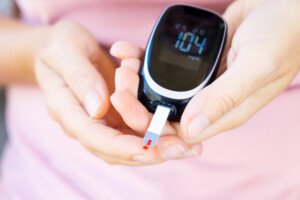
Insulin resistance or prediabetes can be successfully treated or reversed with T3, a bioidentical hormone, says Dr. Kent Holtorf, MD, thyroidologist and founder of Holtorf Medical Group in California.
Though a diagnosis of insulin resistance (prediabetes) may be issued simply because a person’s fasting glucose is between 100 and 124 mg/dL, your doctor may not officially diagnose this condition unless a few other conditions are met.
Those conditions include that of a second blood test, taken several months later, yielding a value in the prediabetes (insulin resistance) range; a body mass index of at least 25; and triglyceride levels in the “high” range.
People with insulin resistance are instructed to reverse or treat this condition by:
1) Losing weight
2) Exercising and
3) Changing their eating habits — namely, restricting high glycemic foods and increasing fiber intake.
This usually does the trick, since the common thread among people with prediabetes is lack of exercise in combination with poor eating habits and/or being overweight.
However…what if a person, upon taking the fasting glucose test that reveals prediabetes, has already been exercising, and has already been eating “healthy” for quite some time, and isn’t even overweight?
Can such a person develop prediabetes?
Dr. Holtorf says, “Genetics play a significant part, so even lean, active people can have insulin resistance.
“Interestingly, insulin resistance is associated with reduced tissue thyroid levels (not detected by standard blood tests), and treating with T3 can reverse the insulin resistance.
“We find a little thyroid optimization can dramatically reduce or reverse insulin resistance.”
If you just learned you have prediabetes (also called “impaired glucose metabolism” and “impaired glucose fasting”), and especially if you’re a lean physically fit individual who’s been restricting white sugar and high fructose corn syrup, and seemingly “doing everything right,” request from your doctor a free T3/reverse T3 ratio test.
A normal free T3/reverse T3 ratio result should be greater than 2, says Dr. Holtorf.
Treatment with T3 is that of bioidentical active thyroid, rather than a synthetic hormone. The bioidentical hormone is short-acting, and thus must be time-released.
Why isn’t T3 therapy a standard treatment for insulin resistance or prediabetes?
Dr. Holtorf explains, “Despite the large amount of literature demonstrating T3’s effectiveness and necessity for treating insulin resistance, endocrinologists and other physicians are not trained in the use of T3 in medical school and residency, so they are not comfortable using it.”
 Dr. Holtorf has published a number of endocrine reviews on complex topics in peer-reviewed journals on controversial diseases and treatments.
Dr. Holtorf has published a number of endocrine reviews on complex topics in peer-reviewed journals on controversial diseases and treatments.
 Lorra Garrick has been covering medical, fitness and cybersecurity topics for many years, having written thousands of articles for print magazines and websites, including as a ghostwriter. She’s also a former ACE-certified personal trainer.
Lorra Garrick has been covering medical, fitness and cybersecurity topics for many years, having written thousands of articles for print magazines and websites, including as a ghostwriter. She’s also a former ACE-certified personal trainer.
.
Top image: Shutterstock/Neirfy
Can Intense Exercise Prevent Insulin Resistance?

Is it really true that intense exercise can prevent you from ever getting insulin resistance?
IR is when the body’s cells can no longer efficiently “take” the glucose molecules that are delivered to them via the hormone insulin.
Glucose is blood sugar. When insulin receptors on the cells can no longer receive all the sugar for energy, the body is then left with unutilized sugar, resulting in higher-than-normal blood sugar levels, and excess sugar going to the liver where it’s converted to fat.
Intuitively, it seems as though regular intense exercise should prevent insulin resistance.
After all, exercise lowers blood sugar and creates more insulin receptors on cells.
We’ve always heard that type 2 diabetes, of which insulin resistance can lead to, can usually be controlled with just diet and exercise.
And we’ve heard that lack of exercise is strongly — very strongly — implicated in the development of insulin resistance.
“Insulin resistance is a genetic trait … you either have it or you don’t,” says Dr. David Edelson, MD, board certified in internal and bariatric medicine, one of the top obesity experts in the U.S., and founder and medical director for thin-site.com and HealthBridge.
However, much like a pendulum, it must be pushed to be set into motion. The ‘push’ could be bad diet, lack of exercise, poor sleep, aging, medications or some other external environmental force.”
Think of it this way: Genetics load the gun, but lifestyle habits pull the trigger.
Dr. Edelson continues: “Conversely, exercise acts like a ballast providing extra weight to a pendulum, making it require more force to set into motion.
“So while in a strict sense exercise will not prevent insulin resistance, it will make it much harder to turn on the gene and set the wheels in motion.”
This is why exercise is one of the major forces that physicians urge their IR patients to undertake to reverse the condition. Inactivity is a leading cause of IR, which affects about one out of every five American adults.
Dr. Edelson explains, “Exercise has definitely been proven in several clinical studies to reduce insulin resistance.
“First of all, it burns up excess circulating blood sugar, preventing the pancreas from having to secrete too much insulin.
“Persistently high levels of insulin in the bloodstream cause reduction in the amount of insulin receptors, the first stage of manifesting IR.”
“Secondly, regular exercise causes increased production of insulin receptors on the muscle cells.
“More receptors means better response to the effects of insulin, resulting in lowering blood sugar and triglyceride levels, less hunger and prevention of weight gain.”
By the way, you can have a normal fasting blood sugar value and still have IR (too much of the hormone in the bloodstream because the pancreas has to over-secrete it in order to lower blood sugar).
Hardcore, intense exercise, though not capable of outright preventing insulin resistance, is a formidable tyrant at minimizing your odds of ever developing IR, not to mention so many other medical conditions.
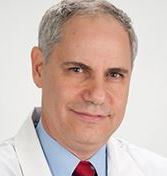
Dr. Edelson is widely recognized as one of the nation’s top weight loss experts, and was listed in NY Magazine’s “Best Doctors of 2014” issue.
 Lorra Garrick has been covering medical, fitness and cybersecurity topics for many years, having written thousands of articles for print magazines and websites, including as a ghostwriter. She’s also a former ACE-certified personal trainer.
Lorra Garrick has been covering medical, fitness and cybersecurity topics for many years, having written thousands of articles for print magazines and websites, including as a ghostwriter. She’s also a former ACE-certified personal trainer.
.
Sources
“Exercise-Induced Transcription of the Muscle Glucose Transporter (BLUT4) Gene”; Biochemical and Biophysical Research Communications, Volume 292, Issue 2, 29 March 2002, Pages 409-414
“Acarbose with Exercise Improves Metabolic Control and Cardiovascular Risk Factor”; Diabetes Care 2006 29:1471-1477
www.thin-site.com; www.healthbridgeinfo.com
Can Insomnia, Poor Sleep, Cause Insulin Resistance?

Who’d ever think that poor sleep or insomnia can actually cause insulin resistance? But it can.
Insulin resistance is associated with obesity, even being moderately overweight, lack of exercise and poor diet. It can lead to type 2 diabetes.
But a person who works out like a warrior, has a strict diet, and is a lean, mean athletic machine, can still end up with insulin resistance if he or she gets poor quality sleep.
“There is a strong association between sleep disorders and both obesity and insulin resistance,” says Dr. David Edelson, MD, board certified in internal and bariatric medicine, one of the top obesity experts in the U.S., and founder and medical director for thin-site.com and HealthBridge.
“When I refer to sleep disorders, I am speaking of anything that can cause either a lack of sufficient quantity of sleep (insomnia, lifestyle issues) or poor quality (sleep apnea, restless legs, fragmented REM sleep, etc.).”
Lifestyle issues include anxiety levels that keep a person tossing and turning, unable to slumber for more than several hours at a time.
Dr. Edelson continues, “The basic problem is that the body requires a certain amount of deep cycle sleep to restore its normal functions after a full day of activity.”
There are two phases of restorative sleep: REM (the dream stage) and slow wave.
“During these phases the body undergoes repair and rejuvenation, restoring depleted hormones and repairing damaged tissues,” says Dr. Edelson.

“If someone has poor sleep quality or quantity, these processes will not occur to a sufficient degree.
“Over time this can result in a multitude of medical issues, including obesity, insulin resistance, hypertension, heart failure, arrhythmias, immune disorders, and the list goes on.”
Insulin resistance can even be caused by just one night of poor sleep, according to a study that was reported in the Journal of Endocrinology & Metabolism (2010).
“Our findings show a short night of sleep has more profound effects on metabolic regulation than previously appreciated,” says Esther Donga, MD, of the Leiden University Medical Center in The Netherlands, and the study’s lead author, in the report.
“Our data indicate that insulin sensitivity is not fixed in healthy subjects, but depends on the duration of sleep in the preceding night.”
Millions of people have obstructive sleep apnea (OSA) and don’t even know it.
Though obesity is associated with this life-threatening condition, not all patients are overweight, and it can affect children, though not commonly.
If you’ve been diagnosed with OSA, you may have insulin resistance.
“As the patient falls into the deep stages of sleep, the muscles around the airway relax and the breathing becomes obstructed,” says Dr. Edelson.
“Oxygen levels fall as the patient literally is choking, and in most cases he/she snaps out of the deep stage sleep into a lighter stage.
“This can happen over 100 times an hour in severe cases, with oxygen levels falling to 60 percent of normal.”
As frightening as this sounds, and as life-threatening as it is (dramatically increasing risk of heart attack and stroke), you can have this disorder and be completely unaware, especially if there’s nobody with you overnight to hear your snoring — a classic symptom of the condition. An overnight oxygen level test will confirm diagnosis.
A questionnaire on thin-site.com, called the Epworth Scale, can evaluate your risk of having OSA.
If you turn out to be diagnosed with OSA, insist on being screened for insulin resistance.
Dr. Edelson says, “Restoring good quality sleep is often one of the most powerful things that can be done to improve a patient’s overall health,” including lowering the risk of insulin resistance, or reversing it if you already have it.
If You Can Retire, Do So! You’ll Sleep Much Better.
Retirement leads to better sleep and improves insomnia, while continuing to work doesn’t.
There’s fewer sleep disturbances and insomnia once a person retires, but this improved sleep isn’t so much from the benefits of retirement, as it is from the removal of the stress of having a job—so says a study that’s reported in the journal Sleep (2009).
The researchers (lead by Jussi Vahtera) found that the chances of having poor sleep during the seven years following retirement were 26 percent lower than in the seven years before leaving the workforce for good.
This post-retirement improvement was greatest in the study participants who were in management jobs, people who had reported jobs with high psychological demands, and those who worked nights.
So remember that if your concerned about poor sleep leading to insulin resistance.

Dr. Edelson is widely recognized as one of the nation’s top weight loss experts, and was listed in NY Magazine’s “Best Doctors of 2014” issue.
 Lorra Garrick has been covering medical, fitness and cybersecurity topics for many years, having written thousands of articles for print magazines and websites, including as a ghostwriter. She’s also a former ACE-certified personal trainer.
Lorra Garrick has been covering medical, fitness and cybersecurity topics for many years, having written thousands of articles for print magazines and websites, including as a ghostwriter. She’s also a former ACE-certified personal trainer.
www.thin-site.com
www.healthbridgeinfo.com
Can Insulin Resistance Kill You?

Wondering if insulin resistance can kill a person?
Can you actually die, directly, from insulin resistance?
This is a fair question, because insulin resistance is a precursor to type 2 diabetes, and type 2 diabetes is a leading killer of people in the U.S.
Insulin resistance raises the risk of stroke, heart disease, kidney disease and other potentially lethal conditions.
Nevertheless, can insulin resistance, of which 60 million Americans have (many not even knowing it), outright kill a person?
“Nobody will ever die as a direct result of having insulin resistance,” says Dr. David Edelson, MD, board certified in internal and bariatric medicine, one of the top obesity experts in the U.S., and founder and medical director for thin-site.com and HealthBridge.
“However, think of it like a stick of dynamite with a very long fuse,” he continues.
“Treat it properly with good lifestyle habits and the fuse will never be lit. Adopt poor lifestyles like a diet high in starches, sugars and bad fats, lack of exercise and poor sleep patterns, and you light the fuse.”
Let’s talk about good lifestyle habits. Often, people think they have healthy lifestyle habits, when in fact, they don’t.
I’m a former certified personal trainer and have known many people who believe they get adequate exercise, when in actuality, just the opposite is true.
Vacuuming and hoisting out the garbage on Sunday evening shouldn’t count as your exercise for Sunday, especially since these tasks involve non-neutral spinal alignment — a bad thing.
You still owe yourself at least 20 minutes of vigorous exercise — in a systematic, methodical way, such as a combination of jumping rope, stair stepping (even one step will suffice if all you have is one step in the house), lunges, squats and jogging in place with high knees.
Bad fats are found in commercially-prepared pastries as well as many snack or munchies-type foods. Read the ingredients lists, even if the box says “no trans fats.”
If you spot the word “hydrogenated” in the ingredients list, don’t buy the item; this is a bad fat.
And limit sugar (and high fructose corn syrup) consumption. Sugar is so ubiquitous that it’s found even in tomato soup.
Dr. Edelson continues, “Along this fuse, you pass certain critical points: One is the metabolic syndrome, another obesity, as well as high blood pressure, and finally type II diabetes.
“Each of these points makes the fuse burn faster toward the eventual explosion of heart attack, stroke, kidney failure, etc.”
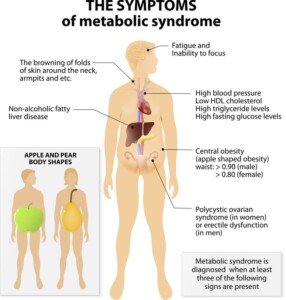
Shutterstock/Disignua
So the answer to “Can you die from insulin resistance” is actually no, in terms of a direct way, such as dying from a gunshot wound.
But in an indirect way, you definitely can, indeed, die from insulin resistance — though it may take years for that spark along the fuse to travel from the point of insulin resistance to the point of death from stroke (from uncontrolled type 2 diabetes).
Insulin resistance is a warning that you are on the path to type 2 diabetes, a top 10 killer of U.S. people.

Dr. Edelson is widely recognized as one of the nation’s top weight loss experts, and was listed in NY Magazine’s “Best Doctors of 2014” issue.
 Lorra Garrick has been covering medical, fitness and cybersecurity topics for many years, having written thousands of articles for print magazines and websites, including as a ghostwriter. She’s also a former ACE-certified personal trainer.
Lorra Garrick has been covering medical, fitness and cybersecurity topics for many years, having written thousands of articles for print magazines and websites, including as a ghostwriter. She’s also a former ACE-certified personal trainer.
.
Top image: Shutterstock/sukiyaki
How a Low Thyroid Can Make You LOSE Weight

It’s possible that low thyroid can cause weight loss — but wait till you find out how this can happen.
Hypothyroidism (the medical term for “low thyroid”) is often blamed on gaining weight.
Hypothyroidism is associated with weight gain and being overweight.
How many times have you read or heard about overweight people blaming low thyroid on their inability to lose weight?
Hypothyroidism is even blamed on obesity! It’s a fact that hypothyroidism can cause some weight gain.
However, low thyroid can cause weight loss, too. I know this because my mother has hypothyroidism and it has caused her to lose weight.
But how can this be? What few people realize (and many doctors overlook this as well, including my mothers’ doctors) is that hypothyroidism is a major cause of clinical depression.
A savvy doctor, upon being presented with a clinically depressed patient, will order a blood test to screen for low thyroid before hastily prescribing the antidepressants.
My mother’s low thyroid caused her to sink into a profoundly depressed state. This went on for about two months before she finally got a blood test that revealed hypothyroidism.
Sequence of events: Mother starts losing appetite; nobody thinks anything of this. She becomes increasingly edgy; nobody thinks anything of this.
She undergoes knee surgery, and immediately afterwards slips into a deep, dark hole of depression, with absolutely no interest in eating.
She quickly loses 10 pounds (from 145) and must be begged and pleaded with just to eat 600 calories a day.
Six weeks after surgery finally goes on Cymbalta (my father was the obstacle to this; I’d been insisting on an antidepressant since several days post-op, but he wouldn’t hear of it and was in denial, and my mother as well detested the idea of antidepressants; but finally my father agreed).
Cymbalta works like a charm: My mother’s interest in eating resumes the day after her first dose!
However, over the next several weeks she develops other symptoms: constipation and excessive sleepiness.
We take her to ER. The ER doctor notices what appears to be hair loss on her scalp and orders a thyroid test!
Bingo! The test comes back positive for hypothyroidism, which explains all of her symptoms (including cold intolerance and an occasional hoarse voice).
Major depression suppresses appetite. If major depression is secondary to hypothyroidism, then technically, the hypothyroidism will cause weight loss.
But not all people with low thyroid will experience depression.
Low thyroid can cause a myriad of symptoms, but the ones that get the most publicity are the weight gain, fatigue (which my mother also had), hair loss and feeling cold in a warm room.
My mother will be taking medication for low thyroid for the rest of her life, and interestingly, she now weighs 131.
She had eventually gotten back up to 143 (she’s about 5-4), and never “gained weight,” but about 10 months after the hyperthyroidism diagnosis, she had emergent quintuple bypass surgery.
This tripped up her thyroid level (resurrecting the depression), and hence, her medication had to be increased!
It took several weeks for the increase to start taking effect (and she eventually got her appetite back).
Interestingly, the depression had disappeared, but eating like a bird, and holding onto the weight loss, persisted for a while.
 Lorra Garrick has been covering medical, fitness and cybersecurity topics for many years, having written thousands of articles for print magazines and websites, including as a ghostwriter. She’s also a former ACE-certified personal trainer.
Lorra Garrick has been covering medical, fitness and cybersecurity topics for many years, having written thousands of articles for print magazines and websites, including as a ghostwriter. She’s also a former ACE-certified personal trainer.
.
Top image: ©Lorra Garrick
Should People with Celiac Gene Avoid Gluten If Not Sick?

Should people with the celiac disease gene avoid gluten even if they have no symptoms of gluten intolerance?
About 30 percent of the American population has the gene associated with celiac disease. According to the National Institutes of Health, three million Americans actually have celiac disease.
Possessing the gene for celiac disease doesn’t mean you’ll necessarily develop this autoimmune condition.
In fact, only 1 to 2 percent of the population will develop CD, says Pam Cureton, RD, LDN, Center for Celiac Research, Growth and Nutrition Clinic in Baltimore.
Having the gene for celiac disease means that the person is predisposed to developing the condition, which can affect people in so many different ways; is one of the most misdiagnosed illnesses; and can cause serious complications such as small-intestine damage, brittle bones and other fall-out from micronutrient and macronutrient malabsorption.
So how does a person learn he or she has the gene for celiac disease? It’s not discovered by accident.
The gene has been identified, for sure; it’s just a matter of requesting the genetic test for it.
Sometimes a person will request this test because a family member has been diagnosed with celiac disease.
Another motive for getting the test is if the individual either has a confirmed, or a suspected, sensitivity to a certain type of food.
Out of curiosity, they then request a full-spectrum analysis for food sensitivity, which may include testing for the presence of the celiac disease gene. The test then reveals that they have this gene.
Should this person, then, commit to a gluten-free diet for the remainder of his or her life, simply based on the presence of a gene, even if they have no symptoms whatsoever of celiac disease?
It doesn’t seem logical to avoid gluten like the plague, just to prevent getting an illness that they have only a 1-2 percent chance of developing.
Should such a person even just cut back on gluten? Cureton explains, “The quantity and timing of gluten introduction can contribute to the development of CD if introduced before four months of age.
“At this time, however, we do not recommend that anyone with just the genetic compatibility for celiac disease remove gluten from the diet.”
However, suppose someone not only has the gene associated with celiac disease, but he or she tests positive for an immune reaction to gluten (elevated antibodies), yet still has no symptoms or perceived ailments.
Cureton explains, “If antibodies are positive, a person should have an endoscopy to see if there is intestinal damage. This damage can be there without symptoms.
“If the damage continues, the ‘symptoms’ could be a secondary autoimmune disease that will take on a life of its own, separate from CD, treated or not.
“We have seen many people that did not have symptoms but did have a positive EGD in our clinic.”
People with diagnosed CD are committed to avoiding gluten 100 percent.
This means avoiding any foods that may have come in contact with gluten-containing foods, such as fruit that was sliced on an unwashed cutting board that was previously used for slicing bread – which contains gluten.
They must avoid, for example, a food item that was cut with a knife that has a few crumbs on it from cutting the bread. It’s all or nothing.
Even the most minute ingestion of gluten (which is found in tons of processed foods) can set off symptoms of celiac disease in the diagnosed patient.
Untreated CD (treatment is lifelong total avoidance of gluten) over time damages the small intestines, severely impairing their ability to absorb vital nutrients.
So though the person is eating, he essentially becomes very malnourished and sickly. The illness raises the risk of small-intestine cancer and lymphoma.
A person with CD cannot digest gluten, a protein found in wheat, barley and rye; the body “thinks” that the gluten is a foreign invader and stages an attack against it; over time, this over-reactive immune response damages the body.
Symptoms of celiac disease include: unexplained weight loss, fatigue, diarrhea, bone pain and abdominal bloating.
The takeaway message, then, is that if you’ve learned you have the gene for celiac disease, but are otherwise healthy and symptom free, then you can continue to enjoy foods with gluten.
However, if you begin developing unexplained symptoms that elude your doctor, request being tested for celiac disease (a simple blood test is the first step).
 Lorra Garrick has been covering medical, fitness and cybersecurity topics for many years, having written thousands of articles for print magazines and websites, including as a ghostwriter. She’s also a former ACE-certified personal trainer.
Lorra Garrick has been covering medical, fitness and cybersecurity topics for many years, having written thousands of articles for print magazines and websites, including as a ghostwriter. She’s also a former ACE-certified personal trainer.
,
Top image: Shutterstock/ Mia Stern
Source: celiac.com/articles/1164/1/Celiac-Disease-Statistics/Page1.html
Does Celiac Gene but No Disease Mean You Can’t Eat Gluten?

If you have the celiac gene but not the disease, should you eliminate gluten?
The short answer is: No.
Even if celiac disease only develops in people who have the genes for it, having the genes only, indicates a predisposition, nothing more; in fact, 95% of those who have such genes will never become celiac,” says Stefano Guandalini, MD, Founder and Medical Director, The University of Chicago Celiac Disease Center.
Dr. Guandalini adds, “Thus, having the genes only, does not mean you must eat gluten-free.”
I wondered, then, about a person whose blood test for celiac disease is negative, he’s symptom-free, but a stool sample shows elevated gliadin antibodies. (Gliadin is a component of gluten.) At that point, should he eliminate gluten?
Dr. Guandalini comments, “No. So far, all forms of testing in the stools carry absolutely no weight in screening or, even less so, diagnosing celiac disease or gluten sensitivity.
“Relying on such tests is to be avoided. Treatment (the gluten-free diet) should only be started after the diagnosis has been conclusively reached, typically on the basis of positive antibody blood tests and a consistent biopsy of the small intestine.”
According to the University of Chicago Celiac Disease Center: If you have a gene associated with celiac disease and are having symptoms, you should have the antibody blood tests to screen for the disease immediately.
If you have the gene and are a first-degree relative of a biopsy‐diagnosed celiac, you should be screened every 2‐3 years or immediately if you have symptoms.
If the blood test is negative and you’re not having symptoms, but you have the genetic predisposition for celiac disease, at that stage of the game, you can definitely continue eating gluten.
A definitive diagnosis comes with an intestinal endoscopy, not a stool sample or even the blood test.
Symptoms of celiac disease include digestive issues, fatigue, weight loss, muscle cramps, aching joints, skin rashes, brittle bones and depression, to name just a few of the wide range of symptoms possible.
Most people with active celiac disease, however, do not have symptoms.



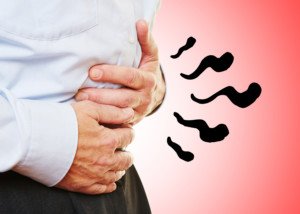
















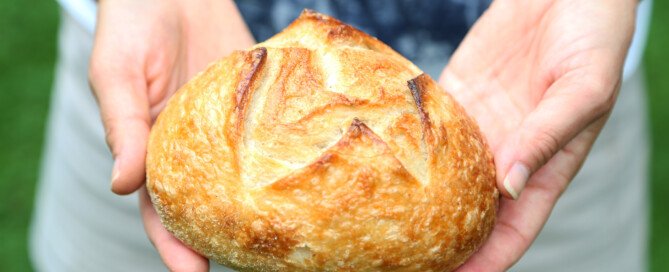



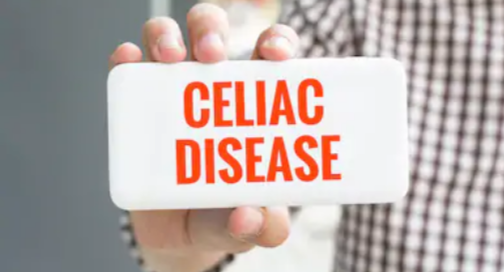
 Dr. Guandalini
Dr. Guandalini





















